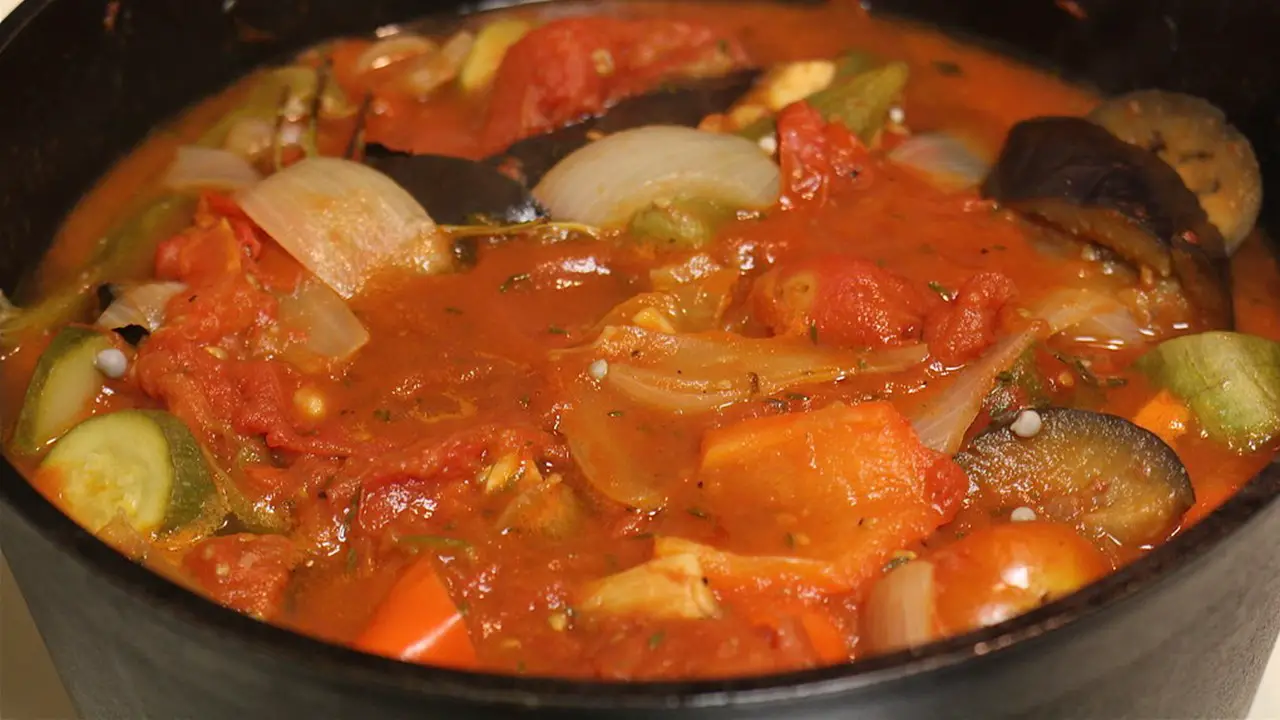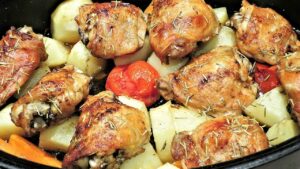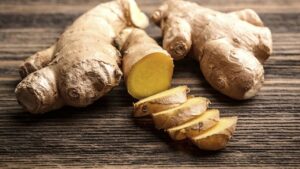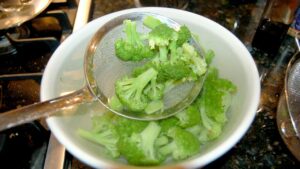What is Stewing?
Stewing is a cooking method that involves slow-cooking pieces of meat, seafood, or vegetables in a liquid mixture over low heat for an extended period.
The liquid can be a combination of water, stock, wine, or other flavorful liquids, and it is typically seasoned with herbs, spices, and other ingredients to enhance the flavor.
Stewing is an excellent way to tenderize tough cuts of meat and to infuse flavors into the dish. It is a popular cooking technique in many cuisines worldwide and is often used to make stews, casseroles, and soups.
Key Takeaways
- A stew is the ultimate one-pot meal.
- The principle of stewing is that a small amount of liquid heated to a temperature just below boiling is used to cook food for a long time.
- Stewing falls somewhere between roasting and boiling and requires careful attention if the meat isn’t to be hardened rather than softened by the process.
- A good cook will always have a small cup or pot full of stock nearby.
Understanding Stewing

Since literally thousands of years ago, people have cooked by boiling. It is believed that prehistoric tribes used turtle or conch shells to boil water.
Prehistoric tribes used turtle or conch shells to boil water. Numerous dishes, including tagines, casseroles, and stews, have been named for the cooking vessel they were prepared in since the invention of pottery about 10,000 years ago.
The method was improved over time with allusions to more contemporary stews found in recorded history, such as the lentil stew in the biblical tale of Cain and Abel, the paprika-flavored Hungarian goulash of the 1700s, and Lord Byron’s allusion to Irish stew in “The Devil’s Drive” of 1814.
A stew is, quite literally, what you put in it; it has been the ultimate one-pot meal for thousands of years.
There is no better way to make tough, close-to-the-shank cuts of meat tender and delectable than to simmer them in a melée of broth, vegetables, and aromatics for an afternoon.
This method works well with beans, vegetables, and seafood. Every mouthful of a good stew elevates the cook to the status of a hero.
Boiling or stewing remained the main cooking technique as cooking became more complex (added ingredients like spices, variations, and combinations).
Stewing was effective and suitable for a wide range of foods and ingredients. It involves slow boiling or simmering for a while. fruits, meat, beans, etc.
Spices were first discovered and were simple to add at the beginning or end of a meal. Put everything in a pot, add water, cover it, and set it on fire.
That was the sum of the cooking procedure. As a result of the process’ excellent flavor extraction, the results, after 15 to 60 minutes (or more), were delicious.
To get back to stewing, though. The monotonous boiling and roasting that alternate on the daily menu of the middle class can be replaced by stewed meat if it is properly understood and executed.
Importance of Stewing
Any Inexpensive Parts Can Be Used
Because the fibers and gelatinous components are softened by the slow, continuous cooking in moist heat, coarse, and therefore inexpensive, parts of meat can be used.
For instance, the reason why hashed mutton is synonymous with bad food is that a careless cook wilfully submerges cold meat chunks in hot, greasy gravy, permanently hardening the meat.
Any cold stock can be made into a nice little gravy by adding a finely chopped, fried onion, some pepper, salt, and, if available, a teaspoon of ketchup.
Keep the Goodness of Meat
Compared to other cooking methods, stewing causes meat to lose less weight. There are some differences between stewing and braising, even though they are frequently confused.
While the liquid may only reach halfway up the sides of the meat in a braise, the meat is completely submerged in cooking liquid when stewed.
In a stew, the meat is typically cut into smaller pieces rather than being left whole. Stewing and braising are different methods of cooking.
Stove Top and Slow Cooker methods of cooking are different. Crock pots and slow cookers are convenient and adaptable.
All the Elements Are Consumed.
Everything is consumed, both the liquid and the solid components. Stewing some meats, like veal and many types of fish can make them much more wholesome than roasting them.
All fish is healthier boiled than fried because stewing is a more gradual process than boiling and the fat is more effectively removed.
Eels are always more wholesome stewed than boiled.
Little Oil is Used.
Only sporadic attention is needed while cooking and little fuel is needed. Stewing falls somewhere in between roasting and boiling, and it requires careful attention if the meat is not to be hardened rather than softened by the process.
If the meat was not supposed to be soaked beforehand, it is preferable to dip it into boiling water for both boiling and stewing.
Since vegetables are frequently added to stews, they not only give the stew more bulk but also make it more wholesome and savory.
Type of Stewing in Cooking
Stove Top Method
Cooking a stew on the stove is perfectly acceptable, but it’s more difficult to control the temperature.
Depending on how hot your stove runs and whether the lid is on or off, you might need to check the liquid levels frequently to ensure there are no hot spots or burning on the bottom.
With the cooking liquid evaporating quickly, you might be able to step away for a short while, but do not wait too long.
Slow Cooker Method
Modern Crock-Pots and slow cookers are convenient and adaptable.
The majority of slow cooker fans adore using this countertop appliance, and there’s a good reason for that: who doesn’t love coming home to dinner that has already been prepared after a long day?
It is about as simple as it gets to plug it in, set it, and forget it.
Oven Method
After you have added all your ingredients and are ready to take a break, you might want to let your stew finish cooking in the oven.
A great way to achieve consistent heating with minimal fluctuation is through an oven’s internal heat.
But it can be challenging to check a large pot in the oven, and it can be difficult to remove when necessary.
What is the Principle of Stewing?
A small amount of liquid heated to a temperature just below boiling is used to cook food for a long time in the stewing process. Stirring, at a slow, steady boil, should not be confused with stewing.
The most convenient way to achieve the ideal temperature for stewing is to use a double boiler.
The water in the outer vessel boils, but the water in the inner vessel does not because it is continuously evaporating at a temperature just below the boiling point, which keeps it slightly below the temperature of the water from which it receives its heat.
What Are the Steps of Stewing?
The steps for stewing are generally as follows:
Choose your ingredients: Select the ingredients you want to use, such as meat, vegetables, or seafood.
Prep your ingredients: Cut your ingredients into similar-sized pieces, and remove any unwanted parts like bones or fat.
Brown the meat (if desired): This step is optional, but browning meat can add extra flavor to your stew. Heat some oil in a pan and sear the meat until it is browned on all sides.
Add liquid and seasonings: Pour a flavorful liquid like broth or wine over your ingredients, and add herbs, spices, and any other seasonings you prefer.
Bring to a simmer: Bring the liquid to a simmer on the stove. Reduce the heat to low, cover the pot, and let it cook for a long time, usually several hours.
Add additional ingredients: Add any additional ingredients you’d like to include in your stew, such as vegetables or legumes.
Adjust seasoning: Taste the stew and add additional seasonings as needed.
Serve: Once your stew is fully cooked, ladle it into bowls and enjoy!
Tips to Make Stewing Better
Stewing is a fantastic cooking method that can help you create delicious and hearty dishes.
Whether you’re making lamb stew, chicken stew, or a vegetarian stew, there are a few tips you can follow to make your stews even better.
Here are some tips to make stewing better:
Choose the Right Meat: If you’re making a meat-based stew, choosing the right cut of meat is essential.
Look for cuts that are tough and contain a lot of connective tissue, such as chuck, shank, or brisket.
These cuts will become tender and flavorful when cooked low and slow in the stew.
Brown the Meat: Before you add the meat to the stew, take the time to brown it first. This will give your stew a deeper, richer flavor and help seal in the juices.
Heat a tablespoon or two of oil in a large, heavy pot over medium-high heat. Add the meat in small batches and cook until browned on all sides.
Use Homemade Stock: If possible, use homemade stock or broth in your stew. It will add more depth and richness to the flavor than store-bought broth.
You can make your own stock by simmering bones, vegetables, and herbs in water for several hours.
Don’t Skimp on Seasoning: Stews can take a lot of seasoning, so don’t be afraid to add more than you think you need. Start with a little and taste as you go, adjusting the seasoning as needed.
Cut Vegetables Uniformly: When you’re adding vegetables to the stew, try to cut them into uniform pieces so that they cook evenly. This will help ensure that all the vegetables are cooked to the same level of doneness.
Add Flavorful Ingredients: Stews are a great opportunity to add flavorful ingredients like herbs, spices, and wine.
Add a bay leaf or two, some thyme, or a sprig of rosemary to the stew for added flavor. A splash of wine can also help to deepen the flavor.
Cook Low and Slow: Stews are best cooked low and slow, so be patient and resist the urge to turn up the heat. Let the stew simmer gently until the meat is tender and the flavors have had a chance to meld together.
By following these tips, you can make your stews even more delicious and satisfying. Remember, stewing is a flexible and forgiving cooking method, so don’t be afraid to experiment and try new things.
Uses of Stewing in Indian Cuisine
In Indian cooking, stewing involves cooking meat, poultry, fish, or vegetables slowly in a liquid until they become tender and flavorful. Here are some of the common uses of stewing in Indian cuisine:
Curries: Stewed meat or vegetables are often used as the main ingredient in Indian curries.
The meat or vegetables are cooked in a mixture of spices and liquids such as coconut milk, tomato puree, or yogurt, until they are tender and the flavors have melded together.
Curries can be made with a variety of meats and vegetables, and the method of stewing helps to create a rich and flavorful sauce.
Dals: Dals or lentil stews are a staple in Indian cuisine. Lentils are cooked with a variety of spices, vegetables, and sometimes meat to create a hearty and nutritious stew.
The lentils are usually simmered in water or broth until they are tender and then flavored with a variety of spices such as cumin, turmeric, and coriander.
Korma: Korma is a creamy and flavorful stew that is made with meat or vegetables, yogurt, and a variety of spices. The dish is often finished with a garnish of nuts and raisins, and it is typically served with rice or naan bread.
Sambar: Sambar is a popular South Indian stew made with lentils, vegetables, and tamarind.
The stew is seasoned with a blend of spices called sambar powder, which typically includes coriander, cumin, mustard seeds, and fenugreek.
The resulting stew is tangy and spicy, and it is often served with rice or dosa.
Finally, stewing is an essential cooking technique in Indian cuisine that is used to prepare a variety of dishes.
The method of cooking slowly in a liquid allows the ingredients to become tender and flavorful, and the resulting stews are often rich and aromatic.
Whether you are making a curry, dal, or korma, stewing is a great way to infuse your dishes with flavor and create a satisfying and hearty meal.
Conclusion
Stewing is a cooking method that involves slow-cooking pieces of meat, seafood, or vegetables in a liquid mixture over low heat for an extended period.
The liquid can be a combination of water, stock, wine, or other flavorful liquids, and it is typically seasoned with herbs, spices, and other ingredients to enhance the flavor.
Stewing is an excellent way to tenderize tough cuts of meat and to infuse flavors into the dish, and it is a popular cooking technique in many cuisines worldwide.







